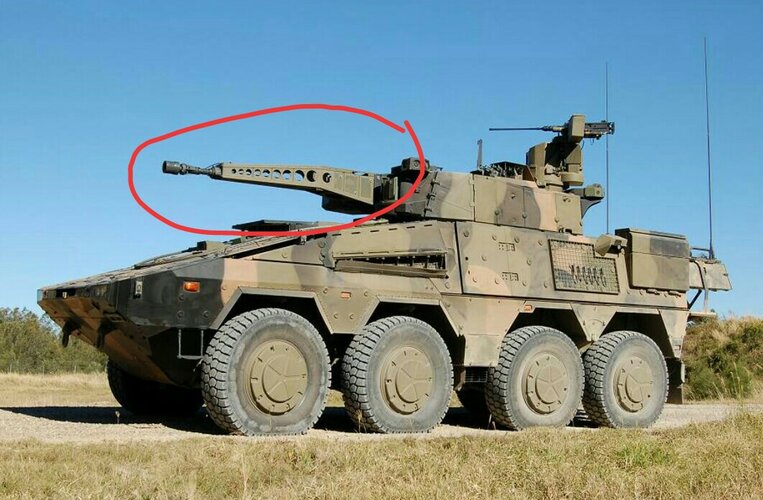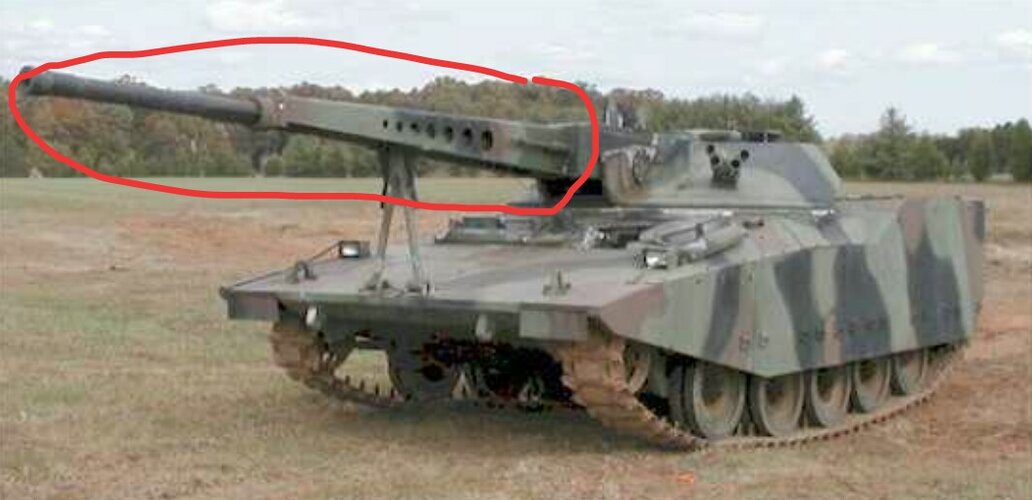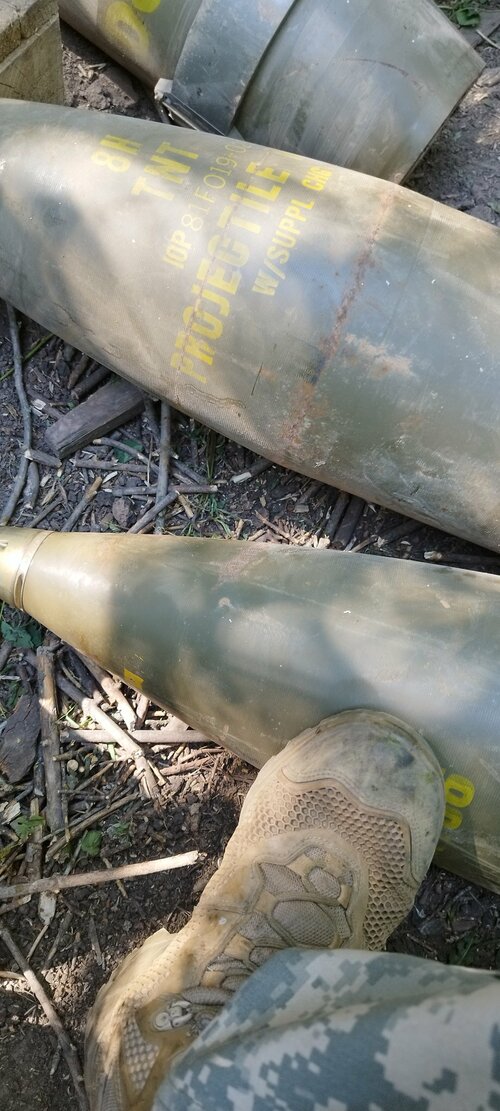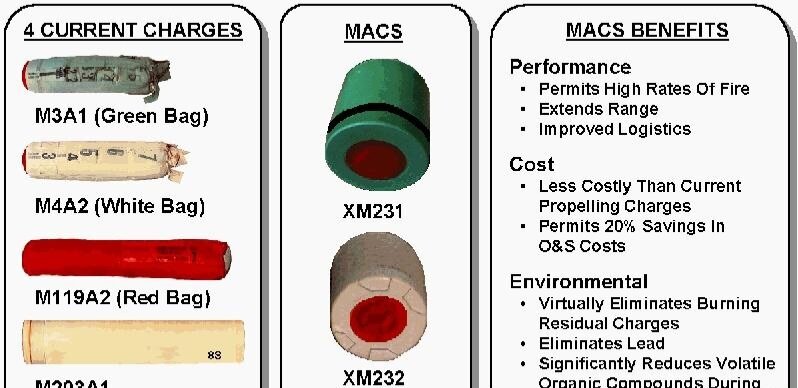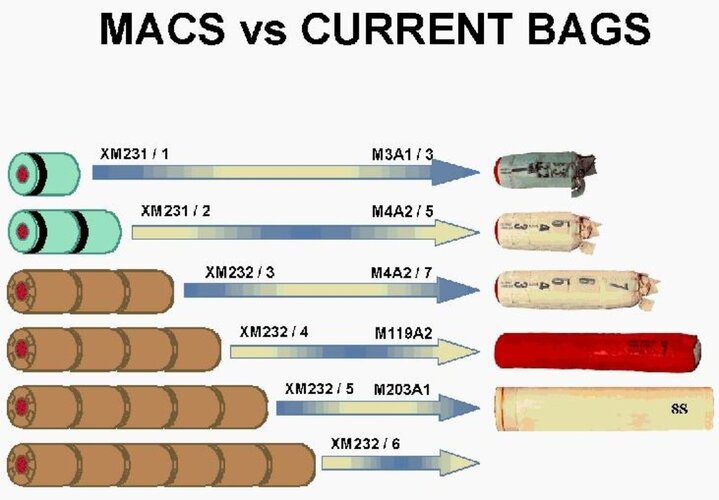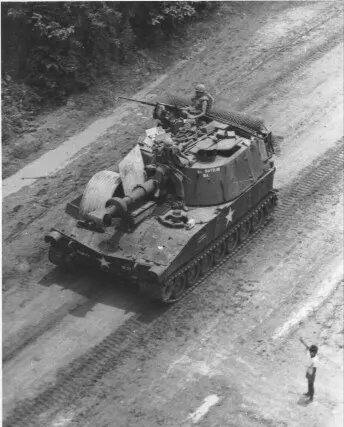You are using an out of date browser. It may not display this or other websites correctly.
You should upgrade or use an alternative browser.
You should upgrade or use an alternative browser.
M109A6 test bed for XM907 ERCA
- Thread starter seruriermarshal
- Start date
- Joined
- 3 June 2011
- Messages
- 18,335
- Reaction score
- 12,233
Has a folding barrel ever been done before?No problem.Great snapping buttocksThat the long barrel M777 they toyed with.Sorry to distract from the main topic, but the gun in the foreground, with it's extremely long barrel has me intrigued
Regards
Pioneer
Forgot the exact model program but its basically a M777 with a 52 caliber barrel instead of the 39 one.
Thanks Forefinder, I appreciate your time and effort in answering my enquiry.
Regards
Pioneer
If I recal correctly.
The long barrel added like half a ton or so to the weight and bout 20km to the range.
With there being 2 models, the standard and the folding, which I think I posted.
The Standard being the well standard model with a one piece 52 caliber.
The folding one had a TWO PIECE barrel that you could fold up to move. Which makes sense since a 52 cal barrel make a M777 nearly 30 foot long compare to the 39's 18 foot. You can see the reasoning,but I dont think it went anywhere.
- Joined
- 21 May 2006
- Messages
- 3,002
- Reaction score
- 2,278
In doing so, I would think you'd sacrifice pressure and structural integrity - warping. I would also think you'd need an external structural support, reminiscent of the external framing on modern AFV's e.g. as is the case with the 30mm cannon of the Boxer AFV...which would naturally add further weight to a design... or come to think of it the AAI Corporation RDF/LT's 75mm gun.....Has a folding barrel ever been done before?No problem.Great snapping buttocksThat the long barrel M777 they toyed with.Sorry to distract from the main topic, but the gun in the foreground, with it's extremely long barrel has me intrigued
Regards
Pioneer
Forgot the exact model program but its basically a M777 with a 52 caliber barrel instead of the 39 one.
Thanks Forefinder, I appreciate your time and effort in answering my enquiry.
Regards
Pioneer
If I recal correctly.
The long barrel added like half a ton or so to the weight and bout 20km to the range.
With there being 2 models, the standard and the folding, which I think I posted.
The Standard being the well standard model with a one piece 52 caliber.
The folding one had a TWO PIECE barrel that you could fold up to move. Which makes sense since a 52 cal barrel make a M777 nearly 30 foot long compare to the 39's 18 foot. You can see the reasoning,but I dont think it went anywhere.
Regards
Pioneer
Attachments
Last edited:
- Joined
- 21 May 2006
- Messages
- 3,002
- Reaction score
- 2,278
Please don't take this as criticism, but I'm a little perplexed by the fact that the United States military has without doubt some of the most sustained combat experience Post-Cold War era and yet it's seemingly unable to formulate, let alone conduct and deliver a weapons/weapons platform successfully, most, if not all, of these programs being deemed "imperative".sferrin said:Kadija_Man said:sferrin said:Kadija_Man said:sferrin said:Kadija_Man said:I wonder why the US Army is suffering so badly from NIH Syndrome?
Because they're smart?
Possibly. However, the evidence would tend to suggest otherwise.
What evidence? Do tell.
Mmmm, the F-22 versus F-23 shenanigans. The littoral ships controversy. The MBT70 debacle. The M2 Bradly armour problems. Going further back, you have the M60 GPMG, the M14, the M16, the SPIW debacle, the ACR debacle, need I go on? There many, many examples of programmes that didn't work out for the US miltiary - partly because of politics and partly because of incompetence.
Aside from the MBT70 those are debatable and Germany shared the blame there. Killing off your own industrial base and buying foreign, for big ticket items, is idiocy of the highest order. YMMV.
There is nothing wrong with buying a foreign design and license producing it. Particularly when it's obvious that you cannot produce a viable system as cheaply as the foreign design. The US Army has adopted the British Light Gun, the M777 155mm Howitzer, the 120mm Mortar. You're acting as if it would mean the end of American industry or something. It didn't in the past and it more than likely won't in the future.
And yet eventually they all sustain massive time and cost overruns, changing of specifications and in so so many cases the eventual cancellation of the given program in the end.
Saying all of the above, I'm at a loss as to why with all their unprecedented combat experience, the U.S. Army has dismally failed to affirmatively replace the likes of the M2/3 Bradley, M109 SPH, M16 assault rifle, M113 APC, the numerous missile replacement programs....
On top of this, there's also the seeming oddity that a country like South Korea can design, manufacture and very successfully export the likes of their Hanwha K9 155mm SPH and now seemingly the K21 IFV to what was traditionally U.S. allies/clients......
Regards
Pioneer
Last edited:
aonestudio
I really should change my personal text
- Joined
- 11 March 2018
- Messages
- 2,964
- Reaction score
- 7,493

Palladyne AI Corp.
Unleash the power of robotic systems with the Palladyne AI software platform to enable robots to observe, learn, reason, and act like humans.
December 1, 2022 by Sarcos
The Sarcos robotic ammunition handling solution leverages a dexterous robotic arm that was designed to be integrated into the U.S. Army’s fleet of Self-Propelled Howitzer Systems, specifically the Extended Range Cannon Artillery system. Sarcos will perform extensive testing of this robotic system to ensure it meets requirements for Army use, including shock and vibration absorption and withstanding extreme temperatures, humidity, and sand and dust incursion.
The robotic system was designed to address fatigue and injuries among Soldiers caused by the prolonged lifting and placing of 100-pound rounds of ammunition from a rack to the cannon loader. Sarcos devised its solution to reduce Soldiers’ injuries.
“The Extended Range Cannon Artillery system is used extensively in the U.S. Army for long range precision firing, but the downside to this system is the weight of the ammunition needing to be hand-loaded by Soldiers in the field,” said Reeg Allen, vice president of business development, Sarcos. “Our ultimate goal with the development of this robotic ammunition solution is to help the Army successfully accomplish their missions with lower rates of injury by having a robot lift and place the heavy ammunition rounds. We are excited about this accelerated testing that will help get this robotic system into the hands of Army personnel soon.”
aonestudio
I really should change my personal text
- Joined
- 11 March 2018
- Messages
- 2,964
- Reaction score
- 7,493
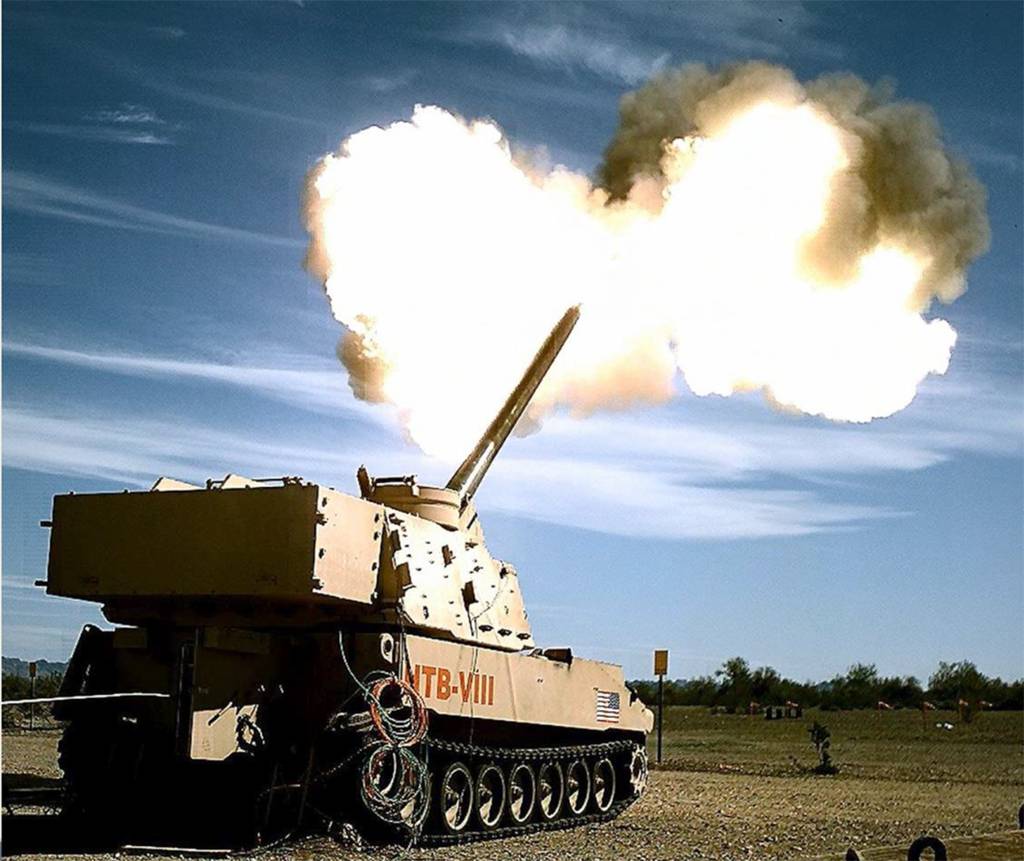
More tests in store for farther-shooting howitzers
Advances have more than doubled the howitzer's ranges already.
- Joined
- 16 April 2008
- Messages
- 9,605
- Reaction score
- 14,493
Extended-Range PGK tested from the ERCA howitzer.
View: https://twitter.com/northropgrumman/status/1617930473090449435
View: https://twitter.com/northropgrumman/status/1617930473090449435
aonestudio
I really should change my personal text
- Joined
- 11 March 2018
- Messages
- 2,964
- Reaction score
- 7,493
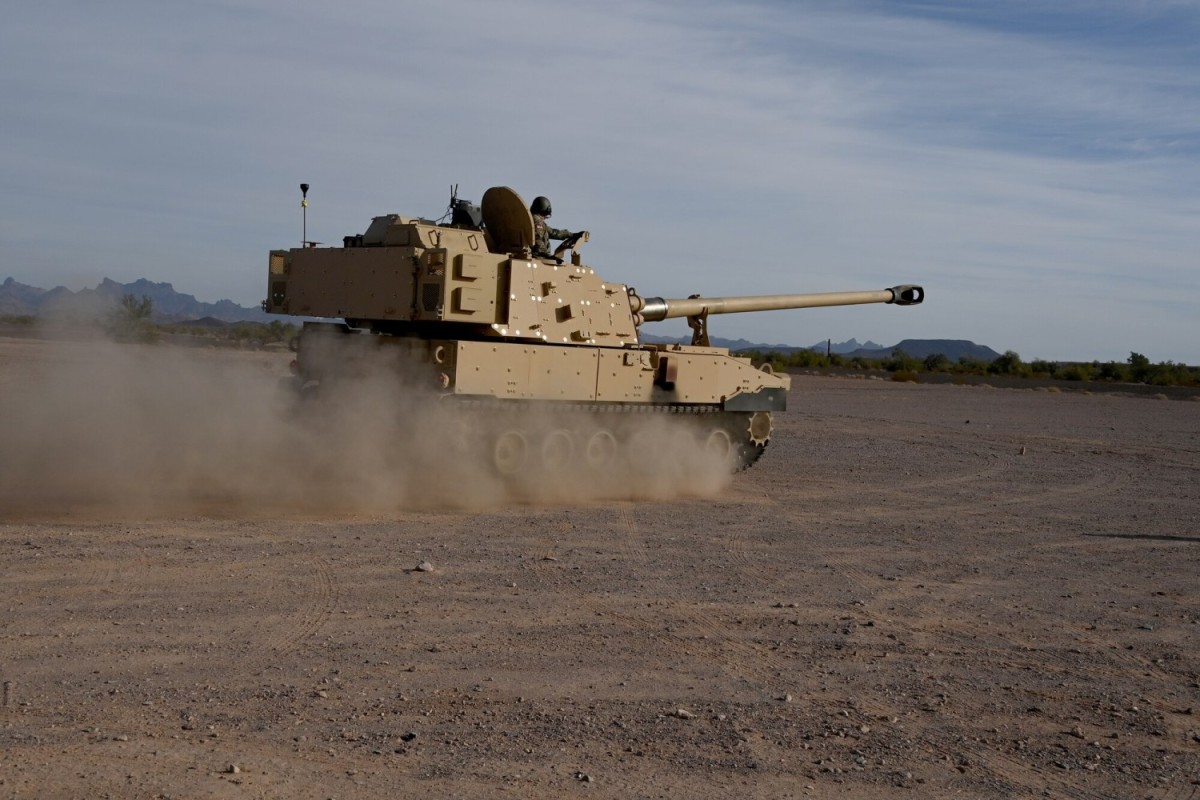
Yuma Proving Ground hosts Extended Range Cannon Artillery Soldier touchpoint
YUMA PROVING GROUND, Ariz. — U.S. Army Yuma Proving Ground is at the forefront of Army modernization efforts. Perhaps the highest profile test projects...
seruriermarshal
ACCESS: Top Secret
- Joined
- 4 May 2008
- Messages
- 1,180
- Reaction score
- 574
BAE Systems successfully tests guided projectile
Mar 29 2023
In partnership with the U.S. Army, BAE Systems successfully fired a Sub-Caliber Artillery Long-Range Projectile with Enhanced Lethality, our concept for the U.S. Army’s XM1155 sub-caliber program, from a 155 mm XM907E2 58 caliber cannon and impacted a fixed target beyond ranges previously demonstrated by other precision guided projectiles fired from the same type of cannon.
The test at White Sands Missile Range, New Mexico, used a U.S. Army-designed sabot package and confirmed the projectile’s compatibility with the 155 mm Extended Range Cannon Artillery (ERCA) Howitzer Test Bed and propelling charges.
“This successful test confirms our Sub-Caliber Artillery Long-Range Projectile with Enhanced Lethality can defeat long-range targets and advance to follow-on testing out to double the range of existing guided projectile and with sensors to find fixed and moving targets of interest,” said Brent Butcher, vice president and general manager of Weapon Systems at BAE Systems. “We are confident that the projectile is on track to provide the Army the best munitions solution for cannon artillery with a leap ahead capability that will bring a highly lethal, maneuverable projectile to soldiers on the battlefield.”
Our concept for the U.S. Army’s XM1155-SC program is an advanced, cannon-launched projectile under development for the defeat of fixed and moving targets in contested environments at more than double the range of existing cannon launched precision guided munitions (PGM). The latest PGM in the Hypervelocity Projectile family of munitions, our concept was developed to penetrate and destroy adversary defenses through increased range, advanced guidance, lethality, and survivability. The projectile addresses the Army’s modernization goals for a long-range precision fires munitions solution.
For the past several years, BAE Systems has invested in the innovation, development and testing of advanced long-range precision fires solutions and has completed more than 100 PGM tests. In early 2022, the predecessor to our XM1155-SC concept, BAE Systems’ Extended Range Hypervelocity Projectile (HVP-ER) successfully destroyed a target at a range of more than 110 kilometers.
BAE Systems is currently under contract with the U.S. Army to develop and test the projectile as part of the Army’s XM1155 Extended Range Artillery Projectile program.
Mar 29 2023
In partnership with the U.S. Army, BAE Systems successfully fired a Sub-Caliber Artillery Long-Range Projectile with Enhanced Lethality, our concept for the U.S. Army’s XM1155 sub-caliber program, from a 155 mm XM907E2 58 caliber cannon and impacted a fixed target beyond ranges previously demonstrated by other precision guided projectiles fired from the same type of cannon.
The test at White Sands Missile Range, New Mexico, used a U.S. Army-designed sabot package and confirmed the projectile’s compatibility with the 155 mm Extended Range Cannon Artillery (ERCA) Howitzer Test Bed and propelling charges.
“This successful test confirms our Sub-Caliber Artillery Long-Range Projectile with Enhanced Lethality can defeat long-range targets and advance to follow-on testing out to double the range of existing guided projectile and with sensors to find fixed and moving targets of interest,” said Brent Butcher, vice president and general manager of Weapon Systems at BAE Systems. “We are confident that the projectile is on track to provide the Army the best munitions solution for cannon artillery with a leap ahead capability that will bring a highly lethal, maneuverable projectile to soldiers on the battlefield.”
Our concept for the U.S. Army’s XM1155-SC program is an advanced, cannon-launched projectile under development for the defeat of fixed and moving targets in contested environments at more than double the range of existing cannon launched precision guided munitions (PGM). The latest PGM in the Hypervelocity Projectile family of munitions, our concept was developed to penetrate and destroy adversary defenses through increased range, advanced guidance, lethality, and survivability. The projectile addresses the Army’s modernization goals for a long-range precision fires munitions solution.
For the past several years, BAE Systems has invested in the innovation, development and testing of advanced long-range precision fires solutions and has completed more than 100 PGM tests. In early 2022, the predecessor to our XM1155-SC concept, BAE Systems’ Extended Range Hypervelocity Projectile (HVP-ER) successfully destroyed a target at a range of more than 110 kilometers.
BAE Systems is currently under contract with the U.S. Army to develop and test the projectile as part of the Army’s XM1155 Extended Range Artillery Projectile program.
- Joined
- 21 April 2009
- Messages
- 13,755
- Reaction score
- 7,691
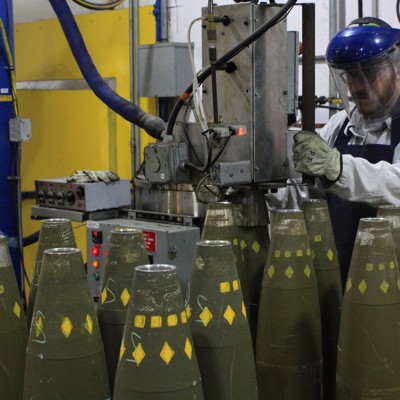
US to Sextuple 155mm Production, Improve Arms Factories
Some $1.45 billion will be spent to better produce artillery rounds, over a million of which have been sent to Ukraine.
Firefinder
ACCESS: Top Secret
- Joined
- 5 October 2019
- Messages
- 1,048
- Reaction score
- 1,898
US to Sextuple 155mm Production...
Pretty use that the first tile Ive seen Sextuple used that way.
Seen double tripe and even Quadruple use like that. But Sextuple is a new one on me.
As for the Article I wonder where they are setting up the production plants. Most of the production been centerized since the 90s draw down.
So I wonder who getting the new gear?
Pretty use that the first tile Ive seen Sextuple used that way.
Seen double tripe and even Quadruple use like that. But Sextuple is a new one on me.
As for the Article I wonder where they are setting up the production plants. Most of the production been centerized since the 90s draw down.
So I wonder who getting the new gear?
- Joined
- 21 April 2009
- Messages
- 13,755
- Reaction score
- 7,691
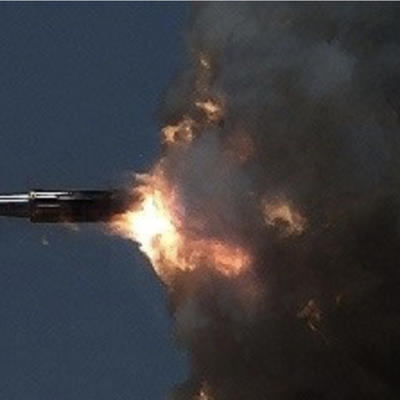
New Artillery Round Shoots Farther Than Some Missiles, Can Hit Moving Targets
Similar rounds, like the Excalibur, have been shipped in large numbers to Ukraine.
Would this imply that the Raytheon/Northrop Grumman SFRJ option has been superseded by the BAE Systems Sub-Caliber Artillery Long-Range Projectile with its U.S. Army-designed sabot package.
New Artillery Round Shoots Farther Than Some Missiles, Can Hit Moving Targets
Similar rounds, like the Excalibur, have been shipped in large numbers to Ukraine.www.defenseone.com
Speculation its advantages include longer range of ~110 km with its glide fins and less costly at approx. <$85,000 per round?
Would note for context a standard 155 mm shell costs approx. $1,000 to $2,000?
Firefinder
ACCESS: Top Secret
- Joined
- 5 October 2019
- Messages
- 1,048
- Reaction score
- 1,898
Would this imply that the Raytheon/Northrop Grumman SFRJ option has been superseded by the BAE Systems Sub-Caliber Artillery Long-Range Projectile with its U.S. Army-designed sabot package.
New Artillery Round Shoots Farther Than Some Missiles, Can Hit Moving Targets
Similar rounds, like the Excalibur, have been shipped in large numbers to Ukraine.www.defenseone.com
Speculation its advantages include longer range of ~110 km with its glide fins and less costly at approx. <$85,000 per round?
Would note for context a standard 155 mm shell costs approx. $1,000 to $2,000?
And for added Context the Excaliber shell current cost over 100k per pop with ranges of no more then 60km.
Not to mention that that is still the Preproduction costs and not the prime time being dump out of tge factory cost.
Which if we go with that cost the two newest Shell designs in the XM1113 and XM1128 are around 15,000 bucks a pop with 40km max ranges.
aonestudio
I really should change my personal text
- Joined
- 11 March 2018
- Messages
- 2,964
- Reaction score
- 7,493
Inside Defense June 15 Army Secretary Christine Wormuth at media briefing this week said the ERCA will likely fall short in completing development by year end as it has experienced “some engineering challenges … that I think are going to create a schedule delay.” understand the technical challenges identified during testing required the service to pause further activities.
Perhaps the required booster zone charge to achieve 70 km range burning the new 30 foot barrels out too quickly or there was previous mention of the copper rotating band on shells with 20 foot tube worked okay but with the extra 10 feet found that that it was causing excessive wear and getting some engraving on the side of the projectiles.
Another concern as funded under MTA contract for raid prototyping, it may exceed the MTA max 5 year duration limit.
Perhaps the required booster zone charge to achieve 70 km range burning the new 30 foot barrels out too quickly or there was previous mention of the copper rotating band on shells with 20 foot tube worked okay but with the extra 10 feet found that that it was causing excessive wear and getting some engraving on the side of the projectiles.
Another concern as funded under MTA contract for raid prototyping, it may exceed the MTA max 5 year duration limit.
bring_it_on
I really should change my personal text
- Joined
- 4 July 2013
- Messages
- 3,668
- Reaction score
- 3,825
Would this imply that the Raytheon/Northrop Grumman SFRJ option has been superseded by the BAE Systems Sub-Caliber Artillery Long-Range Projectile with its U.S. Army-designed sabot package.
New Artillery Round Shoots Farther Than Some Missiles, Can Hit Moving Targets
Similar rounds, like the Excalibur, have been shipped in large numbers to Ukraine.www.defenseone.com
Speculation its advantages include longer range of ~110 km with its glide fins and less costly at approx. <$85,000 per round?
Would note for context a standard 155 mm shell costs approx. $1,000 to $2,000?
There are 3 or four OEM's who were put on contract to support the program. Three employ some sort of SF ramjet propulsion and the fourth is BAE with their round. Each is at a different level of their maturity / demonstration curve but they are all moving along nicely.
Scott Kenny
ACCESS: USAP
- Joined
- 15 May 2023
- Messages
- 11,628
- Reaction score
- 14,305
At the time, the engine that was reliable on any liquid fuel was a turbine. Turbines will happily burn 87octane gasoline, they will burn propane, they will burn natural gas, they will burn highway diesel (PT6-AG says hi), they will burn Jet A, they will burn JP8, they will burn JP5.I'd agree that the second iteration of the Crusader does look an awful lot like the vehicle we need today. One thing I did not understand however was the desire to use a gas turbine engine in it. I suppose it might have made some sense when the concern was a rain of Soviet counter-battery fire hitting the position you just fired from but by the early 2000s it seems like a multi-fuel diesel engine would have been the more economical choice.sferrin said:Kman continues to mistake indecisiveness with ability. Crusader is exactly what we need today. And license production, when you can make it in-house, is completely idiotic, especially for something as major as a SP gun. Why support somebody else's industrial base while your own rots?
Scott Kenny
ACCESS: USAP
- Joined
- 15 May 2023
- Messages
- 11,628
- Reaction score
- 14,305
31rd autoloader weighed too much.If this one is functional why go to a smaller 23 shell autoloader?
Scott Kenny
ACCESS: USAP
- Joined
- 15 May 2023
- Messages
- 11,628
- Reaction score
- 14,305
I cannot imagine trying to make a pair of 15ft tubes line up perfectly every time...If I recal correctly.
The long barrel added like half a ton or so to the weight and bout 20km to the range.
With there being 2 models, the standard and the folding, which I think I posted.
The Standard being the well standard model with a one piece 52 caliber.
The folding one had a TWO PIECE barrel that you could fold up to move. Which makes sense since a 52 cal barrel make a M777 nearly 30 foot long compare to the 39's 18 foot. You can see the reasoning,but I dont think it went anywhere.
trajan
ACCESS: Confidential
- Joined
- 23 October 2020
- Messages
- 160
- Reaction score
- 346
Human Factors Howitzer Test Bed developed by the US Army Human Engineering Laboratory in 1986.
HFHTB is based on M109A2, which features 750hp GT601 gas turbine, an automated projectile loader, 25mm AMG RWS, HFCC computer, a STAGET stabilized gun sight for the direct engagement.



A forgotten and very interesting weapons development project.
Considered to have influenced the Crusader self-propelled artillery project and subsequent US self-propelled artillery development
HFHTB is based on M109A2, which features 750hp GT601 gas turbine, an automated projectile loader, 25mm AMG RWS, HFCC computer, a STAGET stabilized gun sight for the direct engagement.
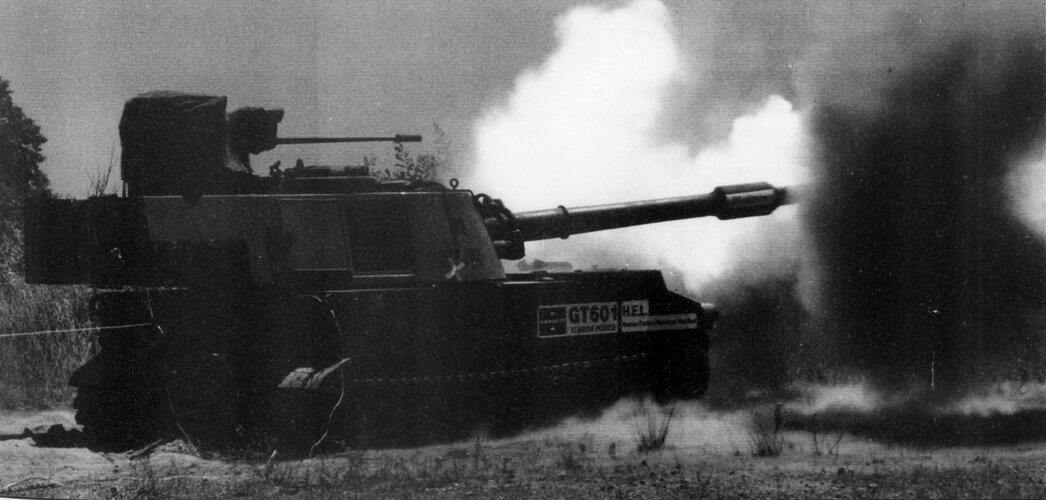
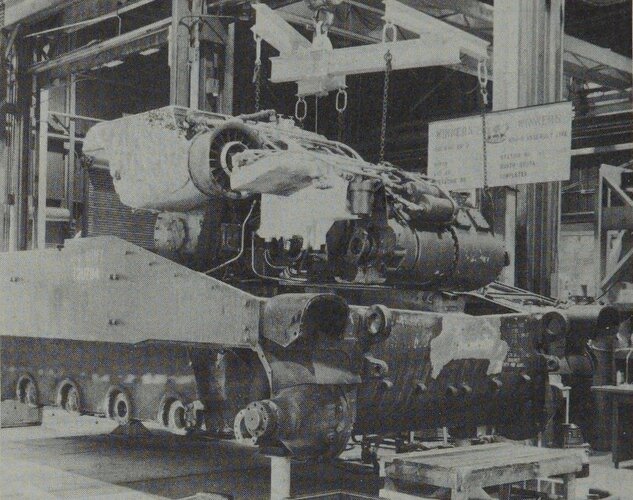
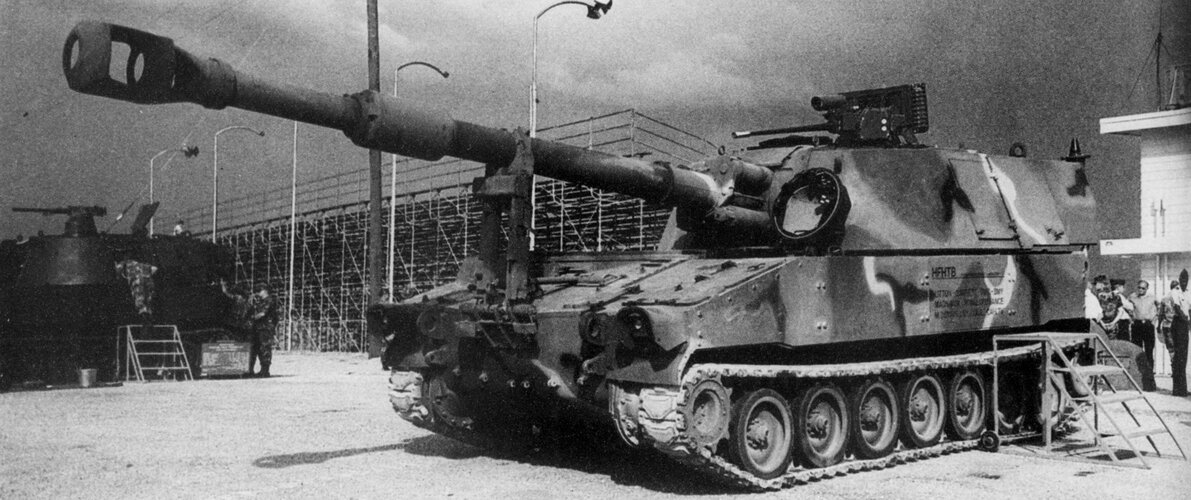
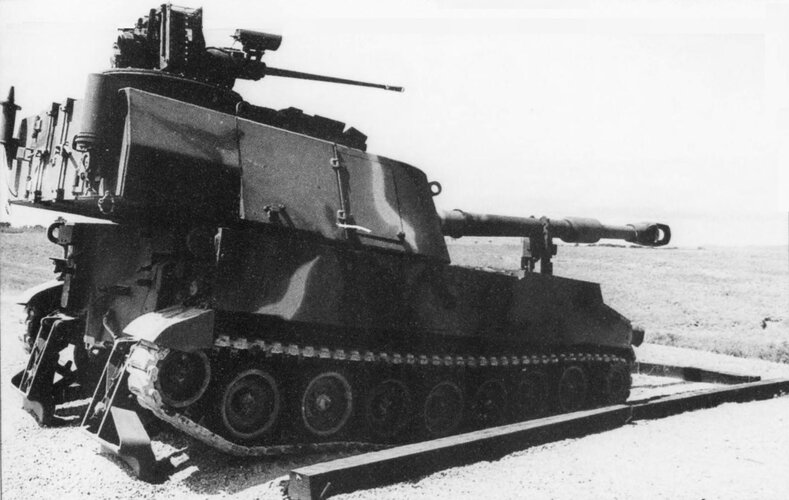
A forgotten and very interesting weapons development project.
Considered to have influenced the Crusader self-propelled artillery project and subsequent US self-propelled artillery development
trajan
ACCESS: Confidential
- Joined
- 23 October 2020
- Messages
- 160
- Reaction score
- 346
In the 1980s the Americans developed a combined 203mm ramjet as part of a life extension programme for the M110 self-propelled gun. Now it looks like BAE's new age project is a bit underpoweredΣ(っ °Д °Would this imply that the Raytheon/Northrop Grumman SFRJ option has been superseded by the BAE Systems Sub-Caliber Artillery Long-Range Projectile with its U.S. Army-designed sabot package.
New Artillery Round Shoots Farther Than Some Missiles, Can Hit Moving Targets
Similar rounds, like the Excalibur, have been shipped in large numbers to Ukraine.www.defenseone.com
Speculation its advantages include longer range of ~110 km with its glide fins and less costly at approx. <$85,000 per round?
Would note for context a standard 155 mm shell costs approx. $1,000 to $2,000?
And for added Context the Excaliber shell current cost over 100k per pop with ranges of no more then 60km.
Not to mention that that is still the Preproduction costs and not the prime time being dump out of tge factory cost.
Which if we go with that cost the two newest Shell designs in the XM1113 and XM1128 are around 15,000 bucks a pop with 40km max ranges.
The ramjet-powered 203mm Advanced Indirect Fire System (AIFS) missile developed by Norden, which has a potential range of 70 km and is designed for the M110A2 Mid-Life Product Improvement Program (MLP). But both programs were ultimately scrapped in the late 1980s.(゚O゚)
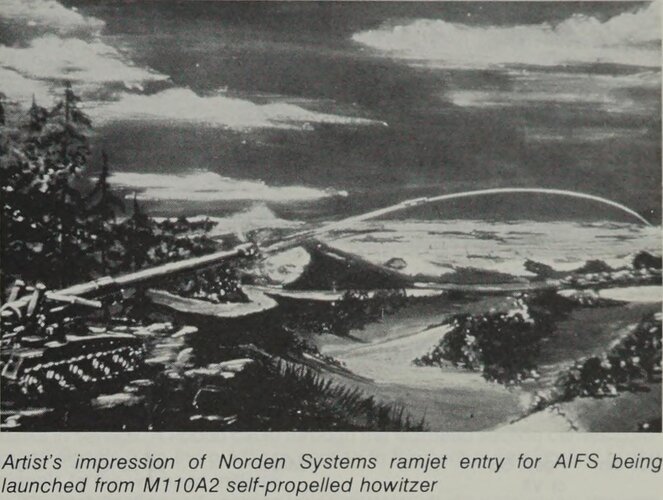
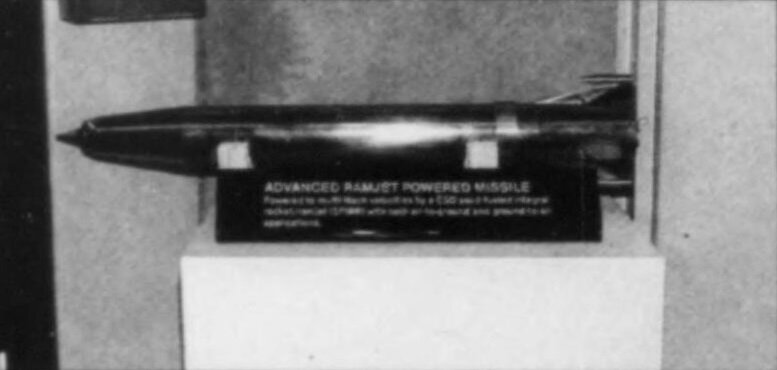
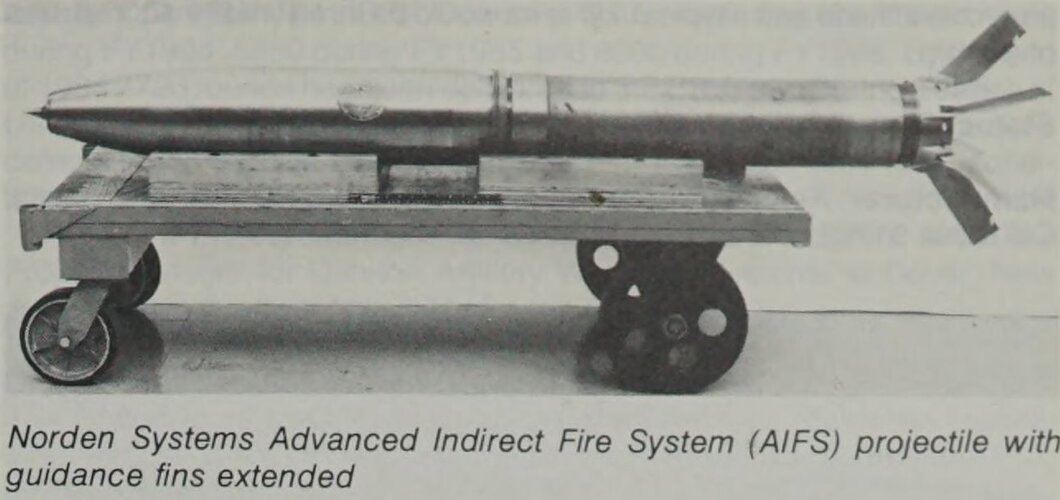
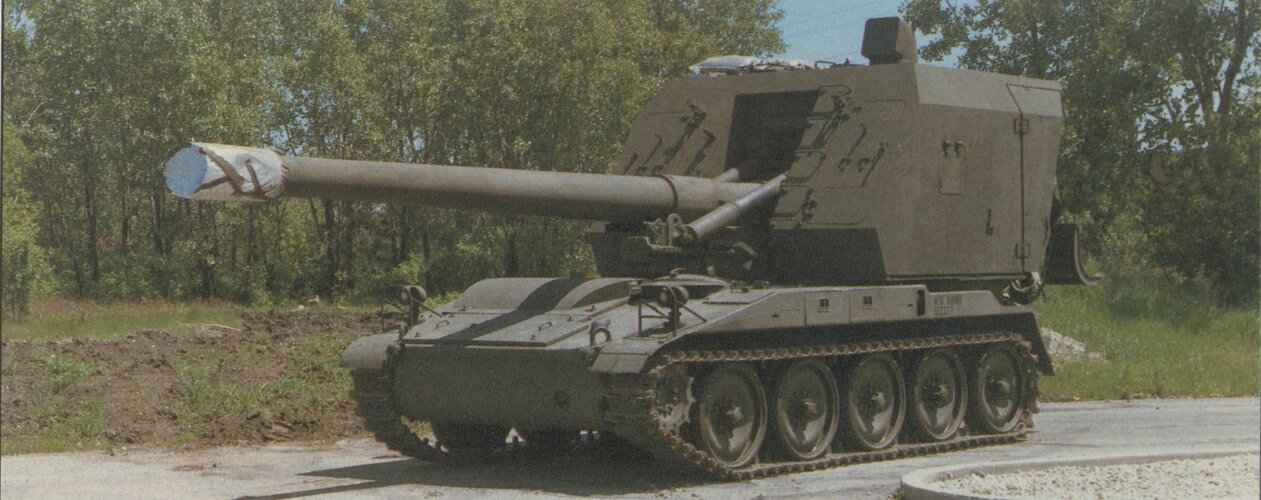
trajan
ACCESS: Confidential
- Joined
- 23 October 2020
- Messages
- 160
- Reaction score
- 346
I have given a general overview of the history of the development of American Cold War and modern self-propelled artillery:
In fact towards the end of the Cold War (after the INF Treaty) the US Army also began to realise the problems previously overshadowed by tactical missile forces and strong air support:
Compared to guns like the PZH2000/AS90/SP70/2S19/FH70 and even the 2S5/2S7, the M198/M109A2/M110 guns were far behind the times, even in terms of artillery shells.
As a result the US Army resumed a major development effort after 30 years of disdain for body-barrelled artillery.
This series of programmes included
Rapidly upgrading the two older guns, the M110/M109
The introduction of the advanced British L15A1/2 (German licensed version called DM121) round, the development of the AIPS large calibre ram-powered precision-guided and Copperbane Snake guided rounds, the X2001 special anti-armour rounds and other new age rounds.
Participated in the development of the M777/XM2001/XM1203 and other advanced towed and self-propelled artillery pieces.
Despite the negative impact of the end of the Cold War, the US Army continued to develop its self-propelled artillery programme until the war on terror 20 years after 9/11.
It was only the heavy pressure from the war on terror in the 20 years after 9/11 that forced the military to halt the programme.
However, since the withdrawal of troops from Afghanistan and Iraq in 20 and 21 years, funding has returned and this new M109 program is more of a tinkering and refinement of the Cold War programme than a new development.
Hopefully, after more than 40 years of tortuous development, the Army will have a self-propelled gun that is actually in service and at the top of its game.
In fact towards the end of the Cold War (after the INF Treaty) the US Army also began to realise the problems previously overshadowed by tactical missile forces and strong air support:
Compared to guns like the PZH2000/AS90/SP70/2S19/FH70 and even the 2S5/2S7, the M198/M109A2/M110 guns were far behind the times, even in terms of artillery shells.
As a result the US Army resumed a major development effort after 30 years of disdain for body-barrelled artillery.
This series of programmes included
Rapidly upgrading the two older guns, the M110/M109
The introduction of the advanced British L15A1/2 (German licensed version called DM121) round, the development of the AIPS large calibre ram-powered precision-guided and Copperbane Snake guided rounds, the X2001 special anti-armour rounds and other new age rounds.
Participated in the development of the M777/XM2001/XM1203 and other advanced towed and self-propelled artillery pieces.
Despite the negative impact of the end of the Cold War, the US Army continued to develop its self-propelled artillery programme until the war on terror 20 years after 9/11.
It was only the heavy pressure from the war on terror in the 20 years after 9/11 that forced the military to halt the programme.
However, since the withdrawal of troops from Afghanistan and Iraq in 20 and 21 years, funding has returned and this new M109 program is more of a tinkering and refinement of the Cold War programme than a new development.
Hopefully, after more than 40 years of tortuous development, the Army will have a self-propelled gun that is actually in service and at the top of its game.
jsport
what do you know about surfing Major? you're from-
- Joined
- 27 July 2011
- Messages
- 7,732
- Reaction score
- 5,751
Thank you very much for the history Trajan.
Some in the Army once understood the importance of forward artillery able to deliver direct fire from the most forward advancing formations as the Soviet practiced w/ the 2S5/2S7. The only Army literature I have found discusses small MRLS units raiding deep to target particular HVTs or for SEAD. Tanks need to be more like SPHs and SPHs need to be more like tanks to maximize the utility of precision and rocket assisted rounds both indirect and direct fire.
Some in the Army once understood the importance of forward artillery able to deliver direct fire from the most forward advancing formations as the Soviet practiced w/ the 2S5/2S7. The only Army literature I have found discusses small MRLS units raiding deep to target particular HVTs or for SEAD. Tanks need to be more like SPHs and SPHs need to be more like tanks to maximize the utility of precision and rocket assisted rounds both indirect and direct fire.
jsport
what do you know about surfing Major? you're from-
- Joined
- 27 July 2011
- Messages
- 7,732
- Reaction score
- 5,751
Understand Norden Systems had a 90mm ramjet tank rd. ..dont know what happened to that company but every tank and artillery should be a reasonably priced guided ramjet by now. Some systematic failure somewhere.
trajan
ACCESS: Confidential
- Joined
- 23 October 2020
- Messages
- 160
- Reaction score
- 346
Firstly, I would like to thank you for your willingness to read through my post, as what I have said has nothing to do with the original topic of discussion, but is simply a feeling.(σ′▽‵)′▽‵)σUnderstand Norden Systems had a 90mm ramjet tank rd. ..dont know what happened to that company but every tank and artillery should be a reasonably priced guided ramjet by now. Some systematic failure somewhere.
I actually started researching these strange Cold War gear as an amateur almost 25 years ago and have posted a few articles on small forums.
I also intend to post a compilation of these in the next while.
If you wish, or the moderators allow, I will then go into more detail with my rudimentary knowledge of the development of self-propelled artillery by country from the 1970s onwards. That is, the well-known Dr Boer and the Four Power Ballistic Agreement to start withΣ(|||▽||| ).
trajan
ACCESS: Confidential
- Joined
- 23 October 2020
- Messages
- 160
- Reaction score
- 346
I used to talk to a retired person who claimed to be from BENTET Labs and he said that the discontinuation of the M110 upgrade program actually involved a number of complex factors. Including but not limited to:Thank you very much for the history Trajan.
Some in the Army once understood the importance of forward artillery able to deliver direct fire from the most forward advancing formations as the Soviet practiced w/ the 2S5/2S7. The only Army literature I have found discusses small MRLS units raiding deep to target particular HVTs or for SEAD. Tanks need to be more like SPHs and SPHs need to be more like tanks to maximize the utility of precision and rocket assisted rounds both indirect and direct fire.
The 155mm nuclear shell, which had been in volume production since the mid-1950s, could accommodate the improved M109 with its long barrel.
The ability to destroy with high precision over a wide area without violating the INF treaty, brought about by the combination of ATACMS and M270MLRS.
The M110A2, even after modification, was still vulnerable to fragmentation blasts and did not have sufficient manoeuvrability or self-fight capabilities.
The Crusader XM2001 required more money and crushed all self-propelled guns in terms of operational efficiency, so the Pentagon chose to all in that project.
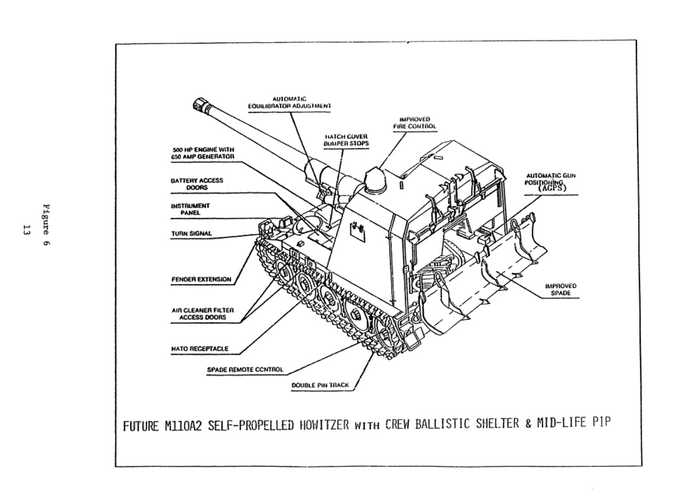
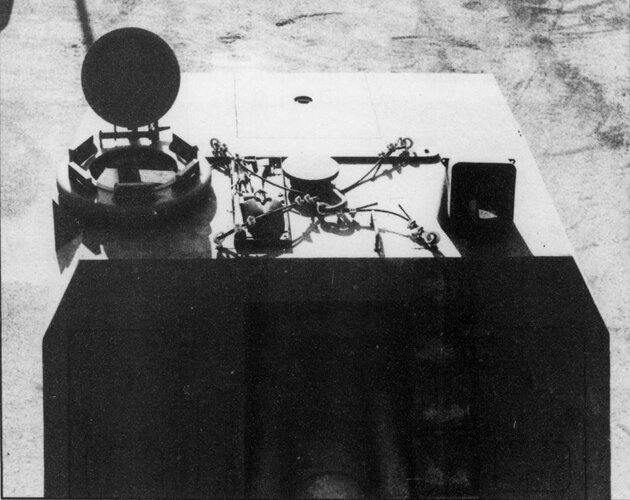
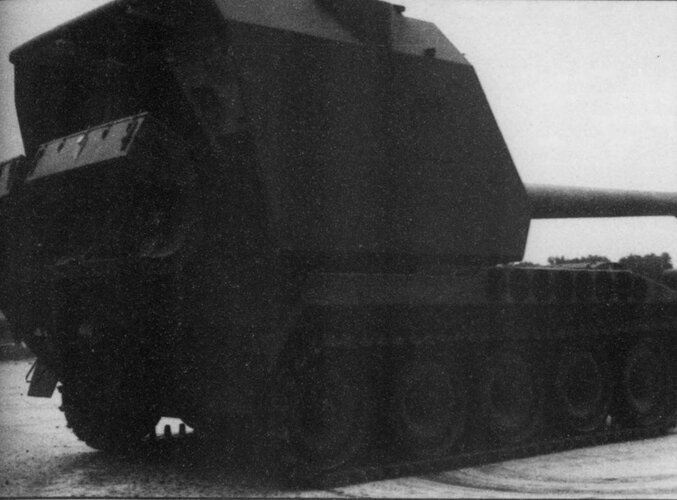
jsport
what do you know about surfing Major? you're from-
- Joined
- 27 July 2011
- Messages
- 7,732
- Reaction score
- 5,751
Thank you again Trajan, and the forum should seek any postings you might provide.I used to talk to a retired person who claimed to be from BENTET Labs and he said that the discontinuation of the M110 upgrade program actually involved a number of complex factors. Including but not limited to:Thank you very much for the history Trajan.
Some in the Army once understood the importance of forward artillery able to deliver direct fire from the most forward advancing formations as the Soviet practiced w/ the 2S5/2S7. The only Army literature I have found discusses small MRLS units raiding deep to target particular HVTs or for SEAD. Tanks need to be more like SPHs and SPHs need to be more like tanks to maximize the utility of precision and rocket assisted rounds both indirect and direct fire.
The 155mm nuclear shell, which had been in volume production since the mid-1950s, could accommodate the improved M109 with its long barrel.
The ability to destroy with high precision over a wide area without violating the INF treaty, brought about by the combination of ATACMS and M270MLRS.
The M110A2, even after modification, was still vulnerable to fragmentation blasts and did not have sufficient manoeuvrability or self-fight capabilities.
The Crusader XM2001 required more money and crushed all self-propelled guns in terms of operational efficiency, so the Pentagon chose to all in that project.View attachment 702058View attachment 702059View attachment 702060
IMHO the M110A2 could have been upgraded to manage vulnerable to fragmentation blasts as well maneuver and self-defense capabilities. IMHO abandoning 8" artillery has been shown to be a mistake given the Ukr context.
Firefinder
ACCESS: Top Secret
- Joined
- 5 October 2019
- Messages
- 1,048
- Reaction score
- 1,898
You might want to toss that over here in the XM2001 thread as well.I used to talk to a retired person who claimed to be from BENTET Labs and he said that the discontinuation of the M110 upgrade program actually involved a number of complex factors. Including but not limited to:Thank you very much for the history Trajan.
Some in the Army once understood the importance of forward artillery able to deliver direct fire from the most forward advancing formations as the Soviet practiced w/ the 2S5/2S7. The only Army literature I have found discusses small MRLS units raiding deep to target particular HVTs or for SEAD. Tanks need to be more like SPHs and SPHs need to be more like tanks to maximize the utility of precision and rocket assisted rounds both indirect and direct fire.
The 155mm nuclear shell, which had been in volume production since the mid-1950s, could accommodate the improved M109 with its long barrel.
The ability to destroy with high precision over a wide area without violating the INF treaty, brought about by the combination of ATACMS and M270MLRS.
The M110A2, even after modification, was still vulnerable to fragmentation blasts and did not have sufficient manoeuvrability or self-fight capabilities.
The Crusader XM2001 required more money and crushed all self-propelled guns in terms of operational efficiency, so the Pentagon chose to all in that project.View attachment 702058View attachment 702059View attachment 702060
Makes for a good piece on how that system came to be imho.
Scott Kenny
ACCESS: USAP
- Joined
- 15 May 2023
- Messages
- 11,628
- Reaction score
- 14,305
Only in terms of using boosted shells of some kind.IMHO abandoning 8" artillery has been shown to be a mistake given the Ukr context.
The basic 203mm artillery only had a 25km range!
The M650 rocket assisted projectile had a 30km range.
The "long range" gun was the 175mm M107 with a 40km range.
Firefinder
ACCESS: Top Secret
- Joined
- 5 October 2019
- Messages
- 1,048
- Reaction score
- 1,898
Needs to be pointed out that at the same tine?Only in terms of using boosted shells of some kind.IMHO abandoning 8" artillery has been shown to be a mistake given the Ukr context.
The basic 203mm artillery only had a 25km range!
The M650 rocket assisted projectile had a 30km range.
The "long range" gun was the 175mm M107 with a 40km range.
The basic 155mm also maxed out at 28km for long range shells.
Even for tge long barrel guns like the XM2001 only got up to 40km by extanding the barrel by like 10 feet going from L38 to L52.
It only within the last 12 years is that the 40km plus shells from 155mm L38s became a thing.
A similar upgrade of the 8 inch might, no wait.
The USN gunfighter program got up to 70km in the 1960s, so be look at almost double that for a modern 8 inch gun.
Scott Kenny
ACCESS: USAP
- Joined
- 15 May 2023
- Messages
- 11,628
- Reaction score
- 14,305
Correct.Needs to be pointed out that at the same tine?Only in terms of using boosted shells of some kind.IMHO abandoning 8" artillery has been shown to be a mistake given the Ukr context.
The basic 203mm artillery only had a 25km range!
The M650 rocket assisted projectile had a 30km range.
The "long range" gun was the 175mm M107 with a 40km range.
The basic 155mm also maxed out at 28km for long range shells.
Even for tge long barrel guns like the XM2001 only got up to 40km by extanding the barrel by like 10 feet going from L38 to L52.
It only within the last 12 years is that the 40km plus shells from 155mm L38s became a thing.
A similar upgrade of the 8 inch might, no wait.
The USN gunfighter program got up to 70km in the 1960s, so be look at almost double that for a modern 8 inch gun.
The M107 had poor accuracy due to barrel whip, making it roughly incapable of counterbattery fire. The M110 only had as much range as the 155mm guns.
So the MLRS got the counterbattery role, and the 175mm and 203mm guns went away due to not having a distinct role to play.
isayyo2
Lurker alert
- Joined
- 24 November 2011
- Messages
- 1,131
- Reaction score
- 2,330
Gunfighter was also a 4” sabot fired from an 8”/55 Gun, not a short barrel Howitzer.The USN gunfighter program got up to 70km in the 1960s, so be look at almost double that for a modern 8 inch gun.
Firefinder
ACCESS: Top Secret
- Joined
- 5 October 2019
- Messages
- 1,048
- Reaction score
- 1,898
Yes and if you read the entire bit, I was pointing out the fact that if you extend the barrel of the Howitzer much like it was done with the 155.Gunfighter was also a 4” sabot fired from an 8”/55 Gun, not a short barrel Howitzer.The USN gunfighter program got up to 70km in the 1960s, so be look at almost double that for a modern 8 inch gun.
You would have gotten basically the same gun as the navy piece.
Edit: Which after a quick research trip.
Be basically the Russia 2s7 Pion which can take US 8 inch shells...
View: https://twitter.com/andriy9221/status/1671872267653902337
Cause that my friends is the US Army M106 round, a new one going by the coating.
Attachments
Last edited:
trajan
ACCESS: Confidential
- Joined
- 23 October 2020
- Messages
- 160
- Reaction score
- 346
I found a discussion about the range of self-propelled artillery during the Cold War, but the range of artillery was influenced by the continuous development of shell technology in addition to the barrel, so I will start with the part about the famous 155 artillery of NATO and Soviet Union in the late Cold War.Only in terms of using boosted shells of some kind.IMHO abandoning 8" artillery has been shown to be a mistake given the Ukr context.
The basic 203mm artillery only had a 25km range!
The M650 rocket assisted projectile had a 30km range.
The "long range" gun was the 175mm M107 with a 40km range.
After all, it takes a real understanding of the time period and the performance of the artillery to get a comprehensive picture of why the US Army returned to artillery development. Already why it persists to this day.
Much of the following is taken from information I have found on the internet and from talking to some professionals.
timeline:1960—2020(focus on 1970—2006)
If there are any mistakes, please feel free to point them out and discuss them.
(。ò ∀ ó。)
trajan
ACCESS: Confidential
- Joined
- 23 October 2020
- Messages
- 160
- Reaction score
- 346
chapter 1:ITS A DISASTER!
In the 1979-1989, the main 155mm guns of the US Army were the M198 towed howitzer and the M109/109A1/A2/A3/A4/A5 self-propelled gun, the specifics of which are easily accessible and will not be described in detail here.
There are, however, a number of details worth noting:
The M109 developed to roughly the M109A5 stage towards the end of the Cold War.

Of these, the M109A2/3, which entered service in 1979, was fitted with the 39x M185 howitzer, which could fire the 30km range M549 rocket-extended projectile.
The M109A3 was an upgrade from the M109/109A1 to the M109A2.

It was not until 1989 that the M109A4 became available for NBC triple defence(`Δ´)!
The M109A5, which entered service in 1990, was able to withstand the chamber pressure of the "Super 8 charge", which made it compatible with the new generation of shells such as the M795 (although the M795 did not enter service until the late 1990s) and had a range of up to 22.5km (M795 howitzer): 30km (M549A1). range.

More importantly, of course, the M109 did not have an automatic loader and had a ridiculously poor rate of fire.

On the other hand:

The M198 heavy gun, which entered service in 1979, weighed 7.154 tons and had a range of up to 30km from the M549A1 rocket-extended projectile and 22.5km from the M795. However, the US Army's M107 shell was so poor in the Cold War that it could only hit conventional grenades for less than 18km, roughly the same level as the D20, and was completely crushed by the performance of the new Soviet 2A65.
TIPS:

The German DM121 (left) is essentially the British L15A1/2. The L15 is the new generation of NATO high charge density ammunition that was finalised with the FH70, the comparison on the right is the older US made M107 shell.
The L15A1/2, with a total weight of 43.5kg, of which 11.3kg is explosive, has a charge density of 26%!!! This is close to the famous B4 203MM heavy howitzer, which had a charge density of around 10-15% during WWII.
The core reason why they could hold so much explosive was that the British had overcome the technology of ultra-high strength thin-cased shells in the 1960s. Compare this to the US Army's Cold War-era M107 conventional grenade, with a total weight of just over 43kg, only 6.8kg is explosive, and the load density is only 15.8%, which is just a little better than WWII levels∑ (´△`)?!
TIPS2:
You may ask why the US Army is not using the M549 across the board to replace the less effective M107 or even the M795?
Because the M549 series of rocket range extenders are actually very expensive - the M795 costs only $333 per round (in 90s currency), while the M549A1 costs $995 per round (in 90s currency), which is three rounds of M795 per round, and without a precision-guided end system, the accuracy of the M549 is abysmal.╯▂╰


Add aII reasons together resulted in the US self-propelled artillery and to towed artillery during the Cold War,IS A DISASTER!! And arguably the worst of any NATO country !!!!!( ゚皿゚)
next chapter is about famous FH/SP70series and RUS 2A65 /2S19
COMING SOOOOOOOON
In the 1979-1989, the main 155mm guns of the US Army were the M198 towed howitzer and the M109/109A1/A2/A3/A4/A5 self-propelled gun, the specifics of which are easily accessible and will not be described in detail here.
There are, however, a number of details worth noting:
The M109 developed to roughly the M109A5 stage towards the end of the Cold War.
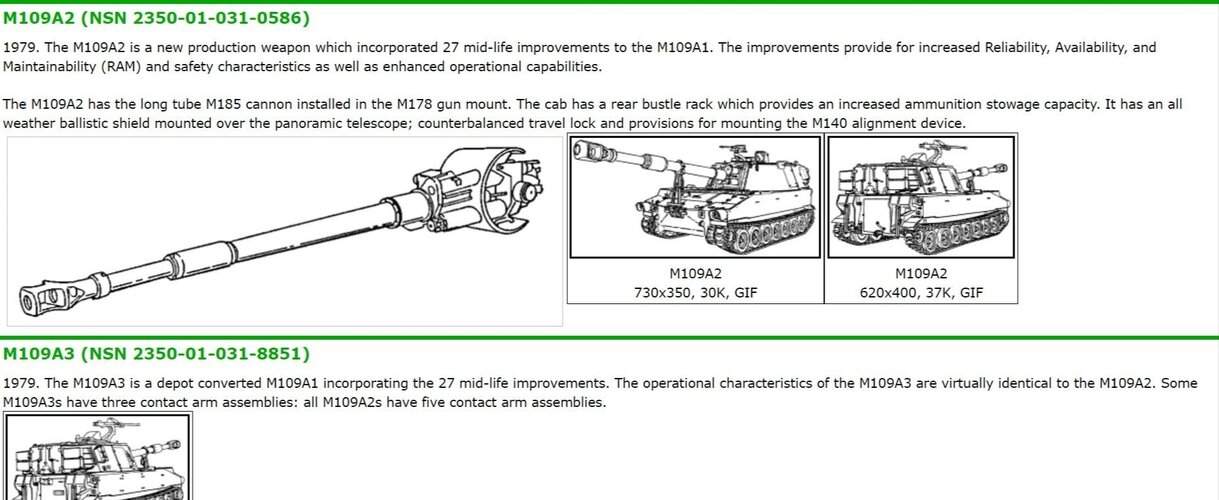
Of these, the M109A2/3, which entered service in 1979, was fitted with the 39x M185 howitzer, which could fire the 30km range M549 rocket-extended projectile.
The M109A3 was an upgrade from the M109/109A1 to the M109A2.
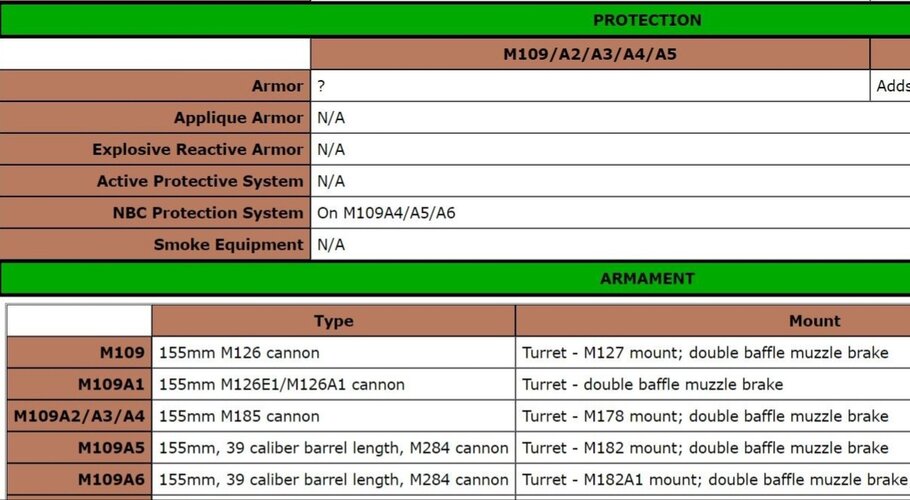
It was not until 1989 that the M109A4 became available for NBC triple defence(`Δ´)!
The M109A5, which entered service in 1990, was able to withstand the chamber pressure of the "Super 8 charge", which made it compatible with the new generation of shells such as the M795 (although the M795 did not enter service until the late 1990s) and had a range of up to 22.5km (M795 howitzer): 30km (M549A1). range.
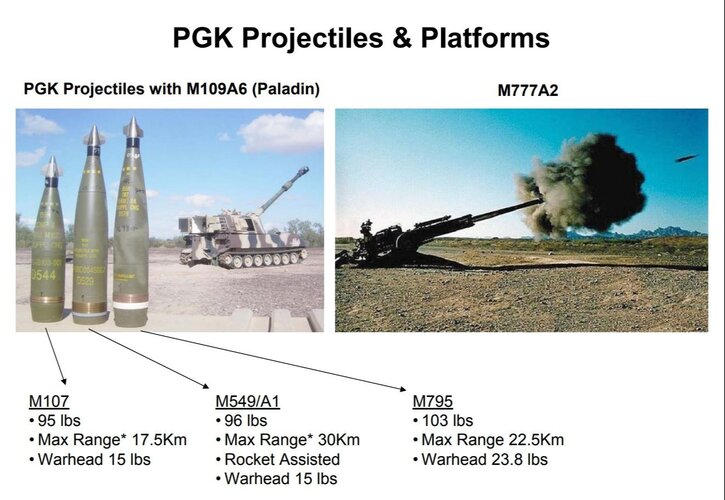
More importantly, of course, the M109 did not have an automatic loader and had a ridiculously poor rate of fire.
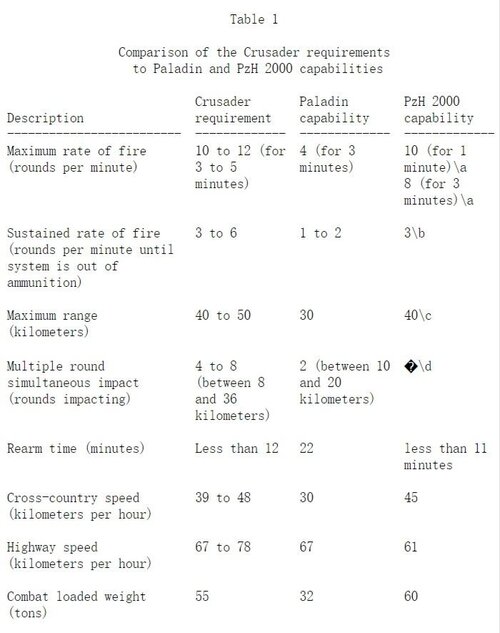
On the other hand:
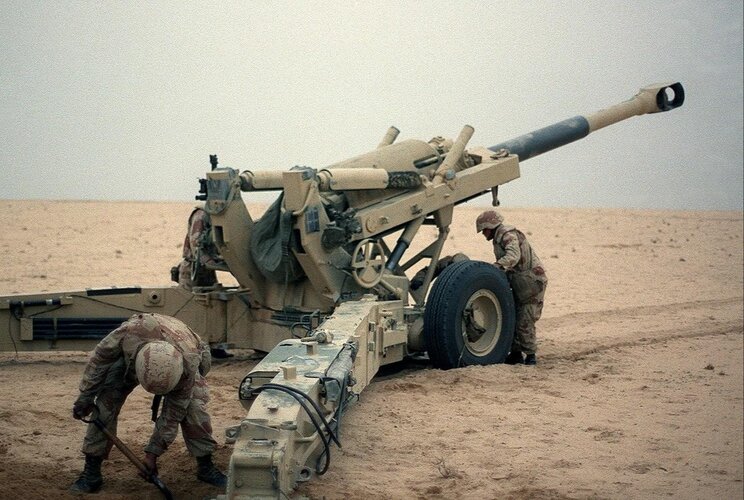
The M198 heavy gun, which entered service in 1979, weighed 7.154 tons and had a range of up to 30km from the M549A1 rocket-extended projectile and 22.5km from the M795. However, the US Army's M107 shell was so poor in the Cold War that it could only hit conventional grenades for less than 18km, roughly the same level as the D20, and was completely crushed by the performance of the new Soviet 2A65.
TIPS:
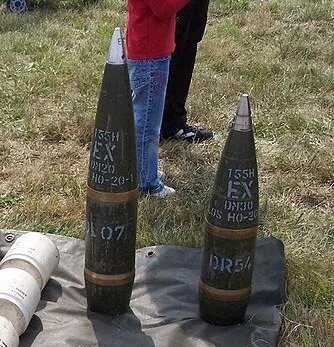
The German DM121 (left) is essentially the British L15A1/2. The L15 is the new generation of NATO high charge density ammunition that was finalised with the FH70, the comparison on the right is the older US made M107 shell.
The L15A1/2, with a total weight of 43.5kg, of which 11.3kg is explosive, has a charge density of 26%!!! This is close to the famous B4 203MM heavy howitzer, which had a charge density of around 10-15% during WWII.
The core reason why they could hold so much explosive was that the British had overcome the technology of ultra-high strength thin-cased shells in the 1960s. Compare this to the US Army's Cold War-era M107 conventional grenade, with a total weight of just over 43kg, only 6.8kg is explosive, and the load density is only 15.8%, which is just a little better than WWII levels∑ (´△`)?!
TIPS2:
You may ask why the US Army is not using the M549 across the board to replace the less effective M107 or even the M795?
Because the M549 series of rocket range extenders are actually very expensive - the M795 costs only $333 per round (in 90s currency), while the M549A1 costs $995 per round (in 90s currency), which is three rounds of M795 per round, and without a precision-guided end system, the accuracy of the M549 is abysmal.╯▂╰
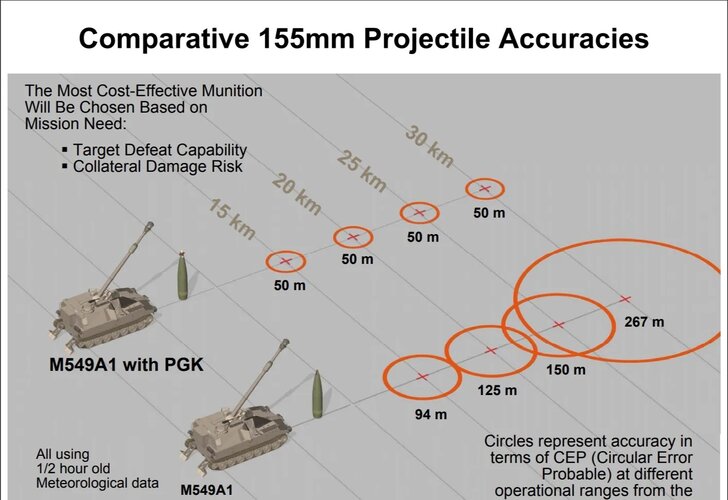
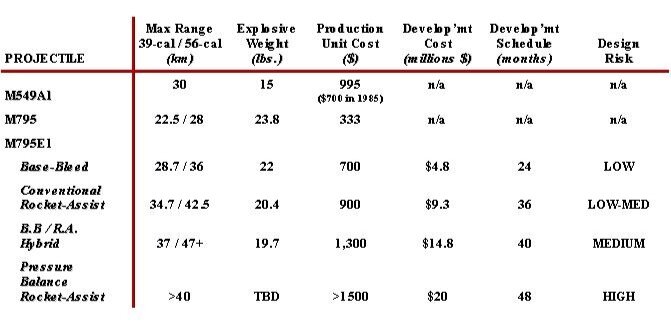
Add aII reasons together resulted in the US self-propelled artillery and to towed artillery during the Cold War,IS A DISASTER!! And arguably the worst of any NATO country !!!!!( ゚皿゚)
next chapter is about famous FH/SP70series and RUS 2A65 /2S19
COMING SOOOOOOOON
trajan
ACCESS: Confidential
- Joined
- 23 October 2020
- Messages
- 160
- Reaction score
- 346
then good night XDchapter 1:ITS A DISASTER!
In the 1979-1989, the main 155mm guns of the US Army were the M198 towed howitzer and the M109/109A1/A2/A3/A4/A5 self-propelled gun, the specifics of which are easily accessible and will not be described in detail here.
There are, however, a number of details worth noting:
The M109 developed to roughly the M109A5 stage towards the end of the Cold War.
View attachment 702107
Of these, the M109A2/3, which entered service in 1979, was fitted with the 39x M185 howitzer, which could fire the 30km range M549 rocket-extended projectile.
The M109A3 was an upgrade from the M109/109A1 to the M109A2.
View attachment 702105
It was not until 1989 that the M109A4 became available for NBC triple defence(`Δ´)!
The M109A5, which entered service in 1990, was able to withstand the chamber pressure of the "Super 8 charge", which made it compatible with the new generation of shells such as the M795 (although the M795 did not enter service until the late 1990s) and had a range of up to 22.5km (M795 howitzer): 30km (M549A1). range.
View attachment 702111
More importantly, of course, the M109 did not have an automatic loader and had a ridiculously poor rate of fire.
View attachment 702108
On the other hand:
View attachment 702109
The M198 heavy gun, which entered service in 1979, weighed 7.154 tons and had a range of up to 30km from the M549A1 rocket-extended projectile and 22.5km from the M795. However, the US Army's M107 shell was so poor in the Cold War that it could only hit conventional grenades for less than 18km, roughly the same level as the D20, and was completely crushed by the performance of the new Soviet 2A65.
TIPS:
View attachment 702110
The German DM121 (left) is essentially the British L15A1/2. The L15 is the new generation of NATO high charge density ammunition that was finalised with the FH70, the comparison on the right is the older US made M107 shell.
The L15A1/2, with a total weight of 43.5kg, of which 11.3kg is explosive, has a charge density of 26%!!! This is close to the famous B4 203MM heavy howitzer, which had a charge density of around 10-15% during WWII.
The core reason why they could hold so much explosive was that the British had overcome the technology of ultra-high strength thin-cased shells in the 1960s. Compare this to the US Army's Cold War-era M107 conventional grenade, with a total weight of just over 43kg, only 6.8kg is explosive, and the load density is only 15.8%, which is just a little better than WWII levels∑ (´△`)?!
TIPS2:
You may ask why the US Army is not using the M549 across the board to replace the less effective M107 or even the M795?
Because the M549 series of rocket range extenders are actually very expensive - the M795 costs only $333 per round (in 90s currency), while the M549A1 costs $995 per round (in 90s currency), which is three rounds of M795 per round, and without a precision-guided end system, the accuracy of the M549 is abysmal.╯▂╰
View attachment 702112View attachment 702113
Add aII reasons together resulted in the US self-propelled artillery and to towed artillery during the Cold War,IS A DISASTER!! And arguably the worst of any NATO country !!!!!( ゚皿゚)
next chapter is about famous FH/SP70series and RUS 2A65 /2S19
COMING SOOOOOOOON
Yes and if you read the entire bit, I was pointing out the fact that if you extend the barrel of the Howitzer much like it was done with the 155.Gunfighter was also a 4” sabot fired from an 8”/55 Gun, not a short barrel Howitzer.The USN gunfighter program got up to 70km in the 1960s, so be look at almost double that for a modern 8 inch gun.
You would have gotten basically the same gun as the navy piece.
Edit: Which after a quick research trip.
Be basically the Russia 2s7 Pion which can take US 8 inch shells...
View: https://twitter.com/andriy9221/status/1671872267653902337
Cause that my friends is the US Army M106 round, a new one going by the coating.
Only in terms of using boosted shells of some kind.IMHO abandoning 8" artillery has been shown to be a mistake given the Ukr context.
The basic 203mm artillery only had a 25km range!
The M650 rocket assisted projectile had a 30km range.
The "long range" gun was the 175mm M107 with a 40km range.
Thank you again Trajan, and the forum should seek any postings you might provide.I used to talk to a retired person who claimed to be from BENTET Labs and he said that the discontinuation of the M110 upgrade program actually involved a number of complex factors. Including but not limited to:Thank you very much for the history Trajan.
Some in the Army once understood the importance of forward artillery able to deliver direct fire from the most forward advancing formations as the Soviet practiced w/ the 2S5/2S7. The only Army literature I have found discusses small MRLS units raiding deep to target particular HVTs or for SEAD. Tanks need to be more like SPHs and SPHs need to be more like tanks to maximize the utility of precision and rocket assisted rounds both indirect and direct fire.
The 155mm nuclear shell, which had been in volume production since the mid-1950s, could accommodate the improved M109 with its long barrel.
The ability to destroy with high precision over a wide area without violating the INF treaty, brought about by the combination of ATACMS and M270MLRS.
The M110A2, even after modification, was still vulnerable to fragmentation blasts and did not have sufficient manoeuvrability or self-fight capabilities.
The Crusader XM2001 required more money and crushed all self-propelled guns in terms of operational efficiency, so the Pentagon chose to all in that project.View attachment 702058View attachment 702059View attachment 702060
IMHO the M110A2 could have been upgraded to manage vulnerable to fragmentation blasts as well maneuver and self-defense capabilities. IMHO abandoning 8" artillery has been shown to be a mistake given the Ukr context.
trajan
ACCESS: Confidential
- Joined
- 23 October 2020
- Messages
- 160
- Reaction score
- 346
I apologise for leaving out a paragraph to explain the reasons for this phenomenon:
Why wasn't the US Army keen on developing artillery during the Cold War until it was fully behind the times ?
IN MY OPINION:
Under the influence of the "missile doctrine" and "tactical nuclear weapons mania" of the 1950s and 1960s, the US Army was equipped with a large number of tactical rocket and missile systems carrying nuclear warheads, and this tradition continued until the 1985 INF Treaty. Giving rise to the Honest John, Corporal, Sergeant, Spear, Assault Destroyer and a host of other battlefield tactical weapons.
For 30 years, the US Army gave the task of countering long-range Warsaw Pact artillery and striking assembly points to these ballistic missile units, represented by the MGM52C Spear, the BGM109G road-based Tomahawk and the MGM31 Pershing. This was naturally the optimal solution in an era of total war in Europe at any time without any problems, but things were not that simple ......
ON THE OTHER HAND:
In every war in which the US military was actually involved during the Cold War, conventional artillery units proved themselves to be an integral part of the effort and demonstrated their unique status as "the most powerful land-based means of lethality under nuclear weapons”.
So the U.S. Army wavered on the option of emphasizing or not emphasizing artillery development until the end of the Cold War when it made up its mind:
Firstly, it stopped further development of conventional long-range artillery after 1945, abandoning the T92/93 series of self-propelled guns and the M1/M2 giant cannon, and regret to gamble on Atomic Anne.
Then the Korean War proved the value of conventional artillery and the Army had to redevelop a new generation of guns: the M108/109/110/107,with atomic ammunition(in TIP below).
Then the Cold War heated up and the Army fell back to the missile faction.So in effect, before the Vietnam War, the US Army's artillery equipment was still at 1950's Korean War levels and was far behind the times.
By the end of the 1970s, with the introduction of a whole new range of 155/152mm suppressed artillery into military service, and the Vietnam War, when US artillery was unable to use nuclear weapons and was defenseless against North Vietnamese forces using Chinese and Soviet equipment.
Once again, the Ministry of Defence found the Army's artillery equipment behind the times.
So entirely new artillery pieces and ammunition were designed and mass produced.
Epilogue: A rocky end
There is no doubt that after 1975 the rate of iteration of US Army artillery equipment rose rapidly.
The M109 evolved to the A5 variant, and by the end of the Cold War there were already options for retrofitting with automatic loaders and 45/52x calibre barrels.
The M110 also once had a proven conversion programme.
The next generation of the M197, the M777, had a disruptive impact on the development of the world's artillery equipment.
The design specifications of the XM2001 Crusader self-propelled gun remain unprecedented and unmatched to this day.
The precision-guided Excalibur shell and the Copperbane Snake missile, as well as the more advanced M735 shell, were introduced into service.
Even after the collapse of the Soviet Union, the Army, which had no immediate threat to stop further development of the M110 and M1906, still attempted to advance the Crusader, as well as adding the XM1203 "non-direct fire support system" to the FCS programme.
Unfortunately, this was accompanied by the collapse of the World Trade Centre and the start of the War on Terror. Only a few of these most advanced artillery systems and munitions in the history of mankind have come to fruition.
The FCS, XM2001 and other "high-intensity conflict and frontal battlefield" equipment were cancelled under the pressure of huge military expenditure.
It is not until 2020, when a serious conflict with Russia and China is likely, and a full-scale war in Ukraine breaks out, that the Army's formerly large tactical missile armament is cancelled.
With the Army's formerly large tactical missile force in tatters, and with only the old M1907A6 and tractor-mounted M777 left as reliable support fires, the US Army has once again pulled its plans from the scrap heap.
After 40 years of trials and tribulations, the US Army finally had the hope of getting a world class self-propelled gun once again when the XM907 system entered service.
TIPS:
in one respect the US artillery technology was unique to the world, and that was to counter the surprise attack of the Soviet armoured forces, all of the US Army's 155mm guns during the Cold War could fire miniaturised nuclear shells.
This was something that no other country could technically match in the US military, which had become "Dr. Strangelove"

basic M109 join army in 1963
with this monster:
M454 155mm atomic shell

Why wasn't the US Army keen on developing artillery during the Cold War until it was fully behind the times ?
IN MY OPINION:
Under the influence of the "missile doctrine" and "tactical nuclear weapons mania" of the 1950s and 1960s, the US Army was equipped with a large number of tactical rocket and missile systems carrying nuclear warheads, and this tradition continued until the 1985 INF Treaty. Giving rise to the Honest John, Corporal, Sergeant, Spear, Assault Destroyer and a host of other battlefield tactical weapons.
For 30 years, the US Army gave the task of countering long-range Warsaw Pact artillery and striking assembly points to these ballistic missile units, represented by the MGM52C Spear, the BGM109G road-based Tomahawk and the MGM31 Pershing. This was naturally the optimal solution in an era of total war in Europe at any time without any problems, but things were not that simple ......
ON THE OTHER HAND:
In every war in which the US military was actually involved during the Cold War, conventional artillery units proved themselves to be an integral part of the effort and demonstrated their unique status as "the most powerful land-based means of lethality under nuclear weapons”.
So the U.S. Army wavered on the option of emphasizing or not emphasizing artillery development until the end of the Cold War when it made up its mind:
Firstly, it stopped further development of conventional long-range artillery after 1945, abandoning the T92/93 series of self-propelled guns and the M1/M2 giant cannon, and regret to gamble on Atomic Anne.
Then the Korean War proved the value of conventional artillery and the Army had to redevelop a new generation of guns: the M108/109/110/107,with atomic ammunition(in TIP below).
Then the Cold War heated up and the Army fell back to the missile faction.So in effect, before the Vietnam War, the US Army's artillery equipment was still at 1950's Korean War levels and was far behind the times.
By the end of the 1970s, with the introduction of a whole new range of 155/152mm suppressed artillery into military service, and the Vietnam War, when US artillery was unable to use nuclear weapons and was defenseless against North Vietnamese forces using Chinese and Soviet equipment.
Once again, the Ministry of Defence found the Army's artillery equipment behind the times.
So entirely new artillery pieces and ammunition were designed and mass produced.
Epilogue: A rocky end
There is no doubt that after 1975 the rate of iteration of US Army artillery equipment rose rapidly.
The M109 evolved to the A5 variant, and by the end of the Cold War there were already options for retrofitting with automatic loaders and 45/52x calibre barrels.
The M110 also once had a proven conversion programme.
The next generation of the M197, the M777, had a disruptive impact on the development of the world's artillery equipment.
The design specifications of the XM2001 Crusader self-propelled gun remain unprecedented and unmatched to this day.
The precision-guided Excalibur shell and the Copperbane Snake missile, as well as the more advanced M735 shell, were introduced into service.
Even after the collapse of the Soviet Union, the Army, which had no immediate threat to stop further development of the M110 and M1906, still attempted to advance the Crusader, as well as adding the XM1203 "non-direct fire support system" to the FCS programme.
Unfortunately, this was accompanied by the collapse of the World Trade Centre and the start of the War on Terror. Only a few of these most advanced artillery systems and munitions in the history of mankind have come to fruition.
The FCS, XM2001 and other "high-intensity conflict and frontal battlefield" equipment were cancelled under the pressure of huge military expenditure.
It is not until 2020, when a serious conflict with Russia and China is likely, and a full-scale war in Ukraine breaks out, that the Army's formerly large tactical missile armament is cancelled.
With the Army's formerly large tactical missile force in tatters, and with only the old M1907A6 and tractor-mounted M777 left as reliable support fires, the US Army has once again pulled its plans from the scrap heap.
After 40 years of trials and tribulations, the US Army finally had the hope of getting a world class self-propelled gun once again when the XM907 system entered service.
TIPS:
in one respect the US artillery technology was unique to the world, and that was to counter the surprise attack of the Soviet armoured forces, all of the US Army's 155mm guns during the Cold War could fire miniaturised nuclear shells.
This was something that no other country could technically match in the US military, which had become "Dr. Strangelove"
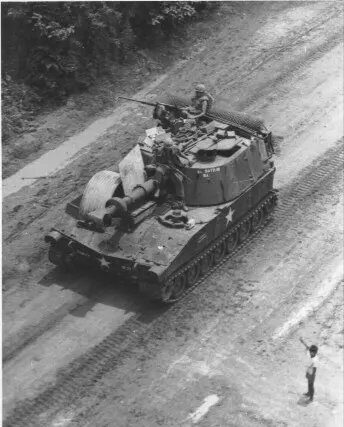
basic M109 join army in 1963
with this monster:
M454 155mm atomic shell
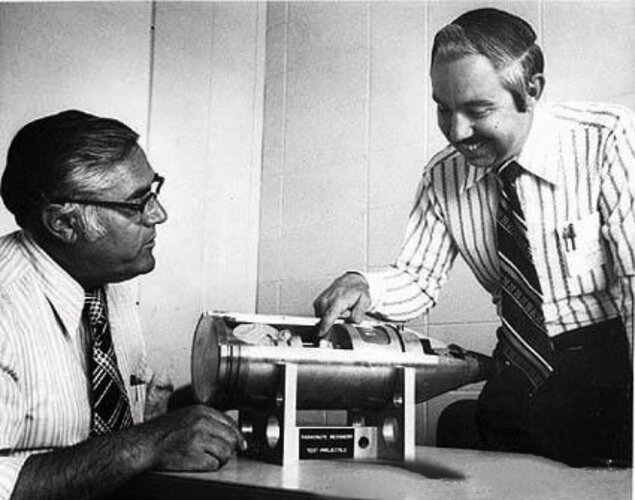
Attachments
Last edited:
Similar threads
-
-
South African artillery/cannon/guns - prototypes, projects, concepts etc.
- Started by Graugrun
- Replies: 139
-
WW1 period (~1900-1920s) experimental and small-known artillery (field, siege, AA)
- Started by Bottleship
- Replies: 55
-
U.S. Army Armored Gun System program (early 1980s)
- Started by Grey Havoc
- Replies: 8
-
Arming a light attack / jet trainer (Aero L-39 Albatros) to intercept & shoot down swarms of low-cost drones
- Started by Supreme Allied Condista
- Replies: 62

